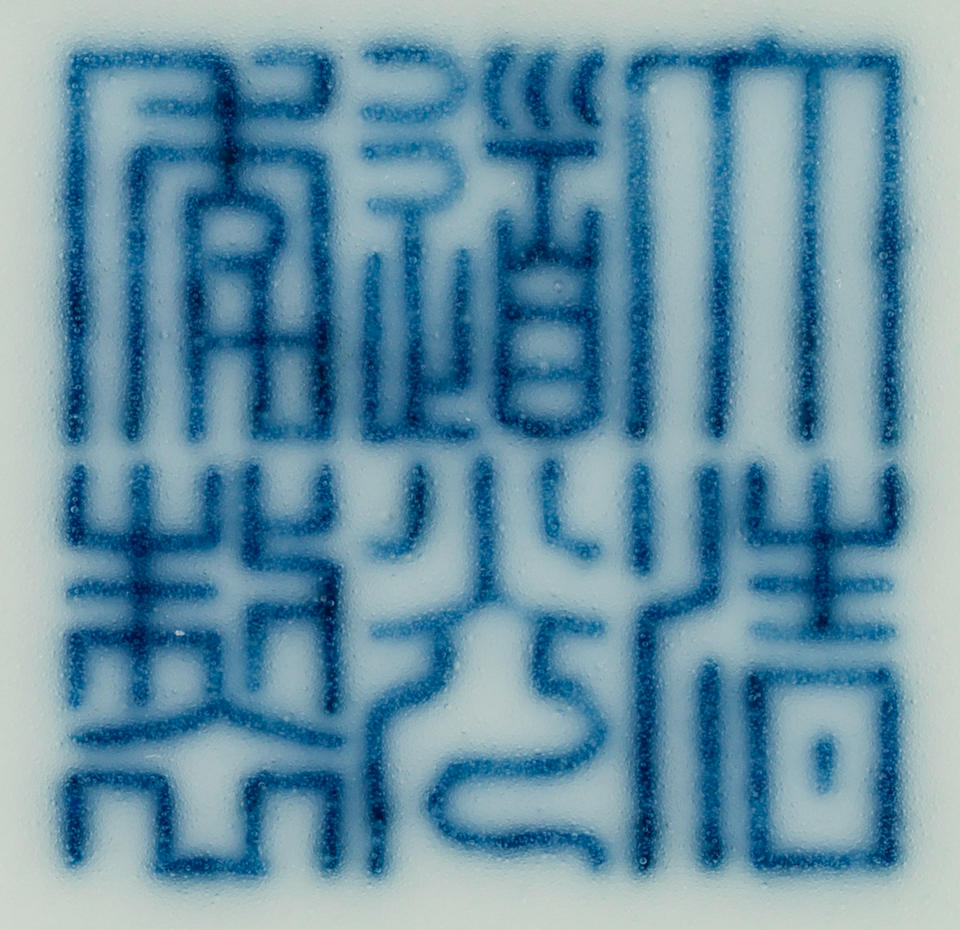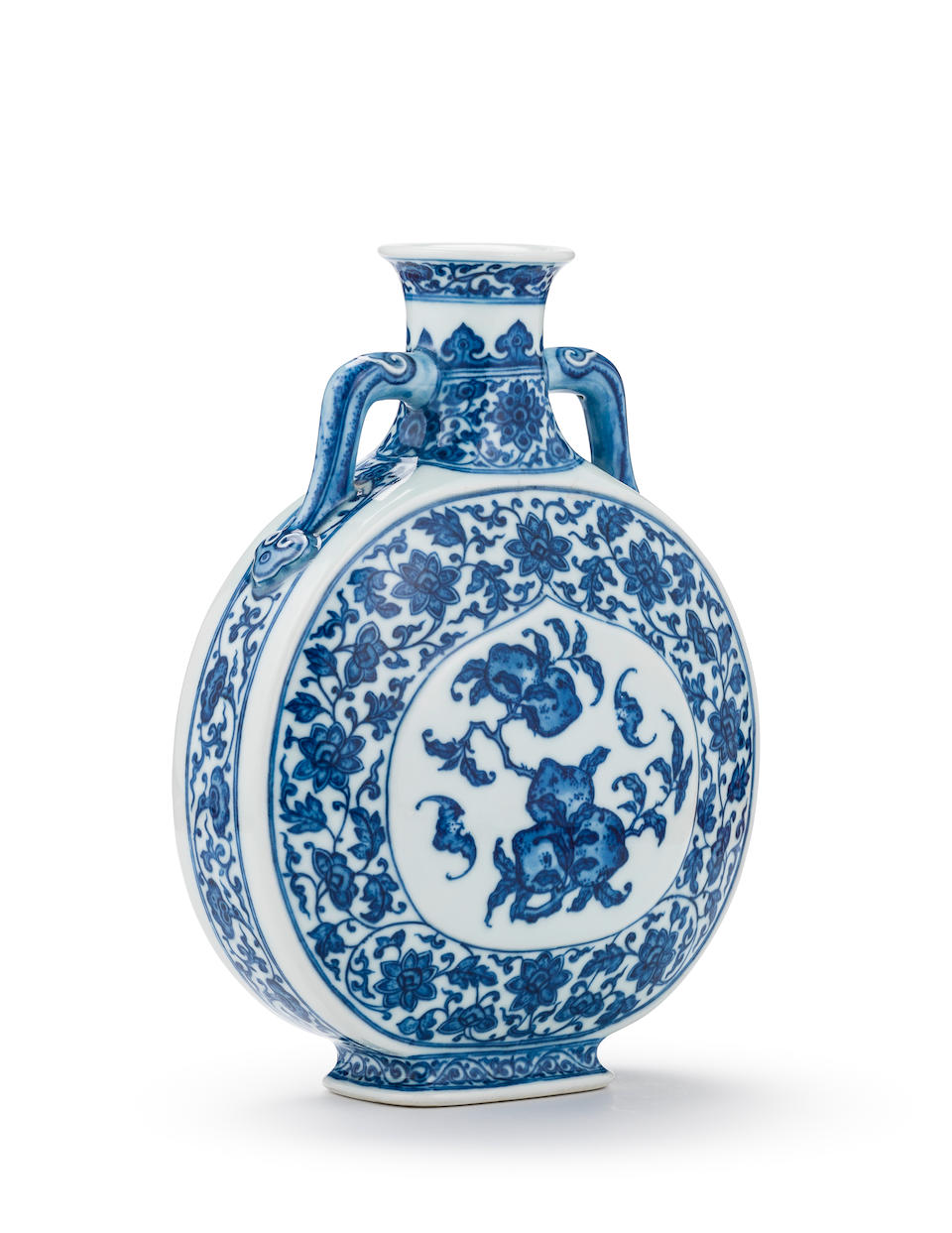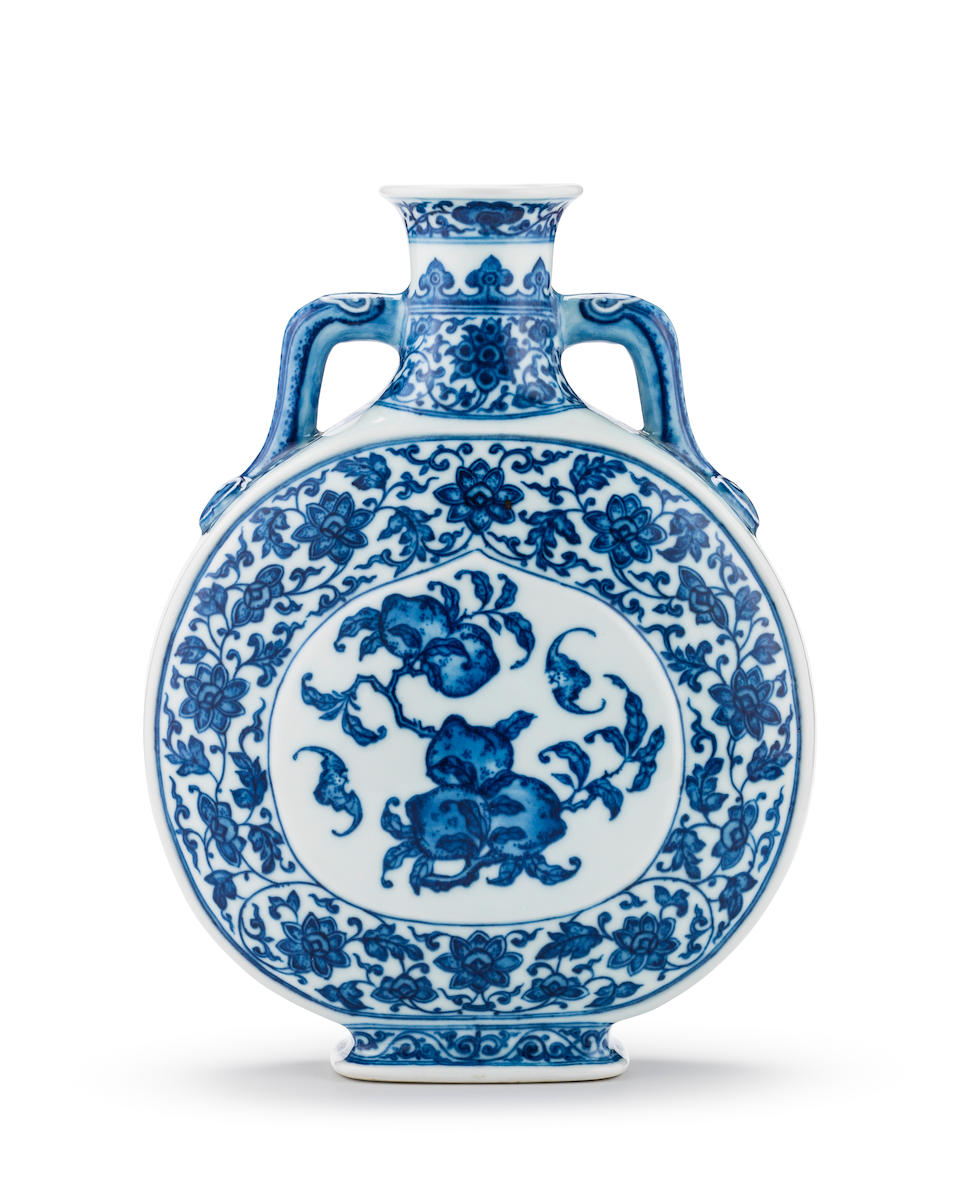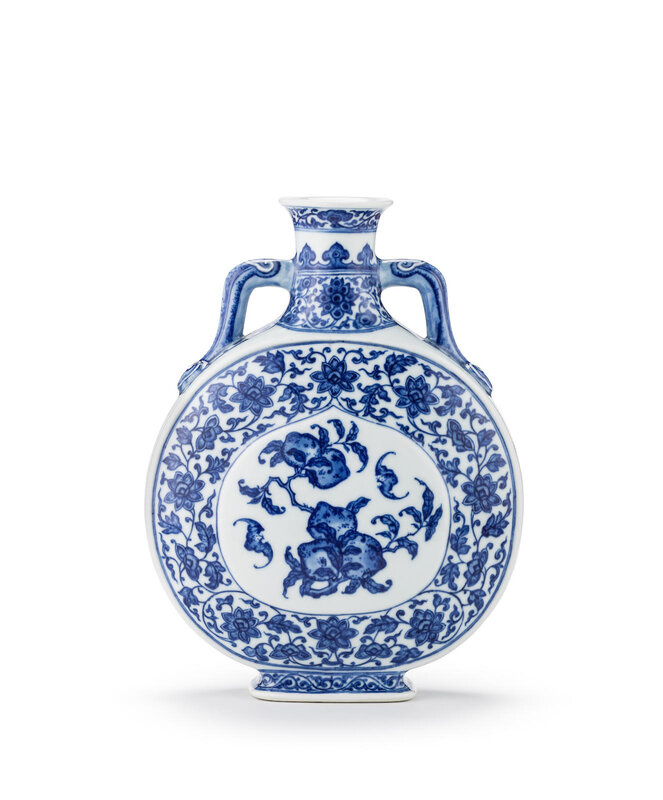A rare Imperial Ming-style blue and white 'peach' pilgrim flask, bianhu, Daoguang seal mark and of the period (1821-1850)




Lot 27. A rare Imperial Ming-style blue and white 'peach' pilgrim flask, bianhu, Daoguang seal mark and of the period (1821-1850); 24cm (9 1/2in) high. Estimate HK$ 200,000-300,000. Sold for HK$ 687,500 (€79,311). Photo: Bonhams.
Of flattened form rising from a splayed rectangular foot, moulded on each side with a raised peach-shaped cartouche in relief, painted with two bats in flight encircling peaches issuing from a gnarled leafy branch, the body further surrounded by meandering lotus scrolls and two bands of lingzhi running along the sides, the narrow neck flanked by a pair of ruyi-form handles, with further lotus scrolls and a trefoil band below the everted rim, the base with a six-character zhuanshu mark.
Note: The present moonflask is a direct continuation of similar vases made during the Qianlong and Jiaqing periods. However, it would appear that a much larger number was produced during the prosperous Qianlong reign, with far fewer examples made in later reigns, making the present lot particularly rare. However, a similar blue and white moonflask, Daoguang seal mark and period, from the Simon Kwan collection was exhibited in the Art Museum, The Chinese University of Hong Kong, illustrated in S.Kwan,Imperial Porcelain of Late Qing from the Kwan Collection, the Art Museum, Hong Kong, 1983, p.42, no.6. Compare also a rare Jiaqing period example in the collection of the Palace Museum, Beijing, illustrated in China's Jingdezhen Porcelain Through the Ages: Qing Dynasty, Beijing, 1998, pp.253-254, nos.1 and 2.
This pilgrim flask belongs to a group of about thirty Imperial porcelains designed by the Imperial Household Department which are referred to as dayun porcelain in the Imperial archive of the Qing dynasty and were sent to the Imperial court in the autumn and winter seasons. These designs continued to be made until the twenty-fifth year of the Daoguang period, corresponding to 1845-6, although the quantity was strictly controlled by the Imperial Household Department. See Wang Guangyao, Official Designs and Imperial Porcelain: The Palace Museum's Collection of Official Porcelain Designs and Porcelains from Imperial Kilns of the Qing Dynasty, Beijing, 2007, pp.15-16.
The form of the present pilgrim flask was inspired by early 15th century prototypes of the Yongle period. These in turn derive their form from the Islamic metal flasks. The subtle and variated blue and white palette imitates the early Ming dynasty imported cobalt blue, with high iron content, resulting in dark blue spots on the surface, also known as the 'heaped and piled' effect.
The design of peaches and bats, with its highly auspicious connotations, appears to have originated in the Kangxi reign, as exemplified in a Beijing enamel censer, Kangxi yuzhi mark and period, which was offered at Sotheby's Hong Kong, 9 October 2007, lot 1539, and grew in popularity during the Yongzheng and Qianlong periods, when it was represented in diverse mediums. The bat, fu (蝠) and peach shoutao (壽桃) form the pun fushou shuangquan or 'may you have both blessings and longevity', which makes this piece particularly suited to be presented as a gift on the occasion of an Imperial birthday.
Bonhams. FINE CHINESE CERAMICS AND WORKS OF ART, 10:30 HKT, HONG KONG, ADMIRALTY

/https%3A%2F%2Fprofilepics.canalblog.com%2Fprofilepics%2F1%2F0%2F100183.jpg)
/https%3A%2F%2Fstorage.canalblog.com%2F03%2F02%2F119589%2F96711876_o.jpg)
/https%3A%2F%2Fstorage.canalblog.com%2F11%2F31%2F119589%2F94773502_o.jpg)
/https%3A%2F%2Fstorage.canalblog.com%2F20%2F83%2F119589%2F94772815_o.jpg)
/https%3A%2F%2Fstorage.canalblog.com%2F26%2F72%2F119589%2F75604929_o.jpg)
/https%3A%2F%2Fstorage.canalblog.com%2F59%2F60%2F119589%2F26458628_o.jpg)



/image%2F1371349%2F20240416%2Fob_2a8420_437713933-1652609748842371-16764302136.jpg)
/image%2F1371349%2F20240414%2Fob_83ee65_2024-nyr-22642-0954-000-a-blue-and-whi.jpg)
/image%2F1371349%2F20240414%2Fob_15808c_2024-nyr-22642-0953-000-a-blue-and-whi.jpg)
/image%2F1371349%2F20240414%2Fob_e54295_2024-nyr-22642-0952-000-a-rare-blue-an.jpg)